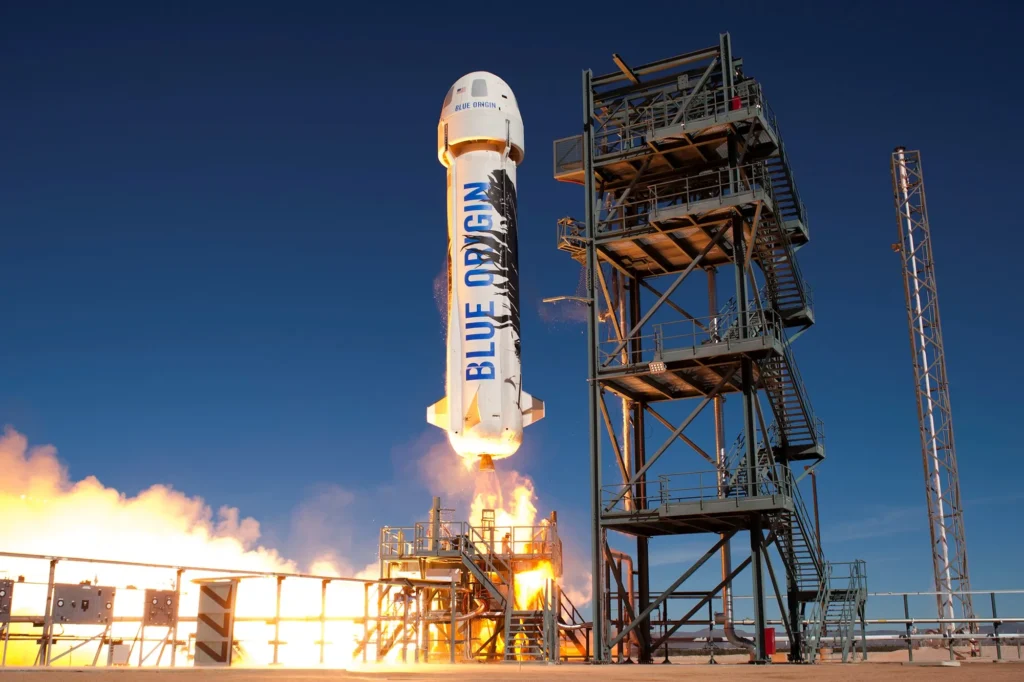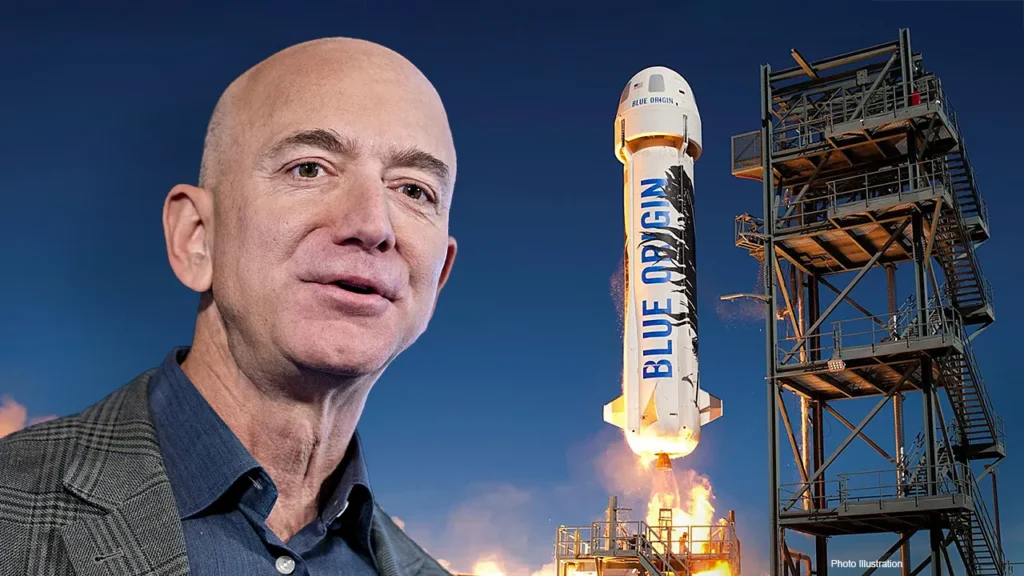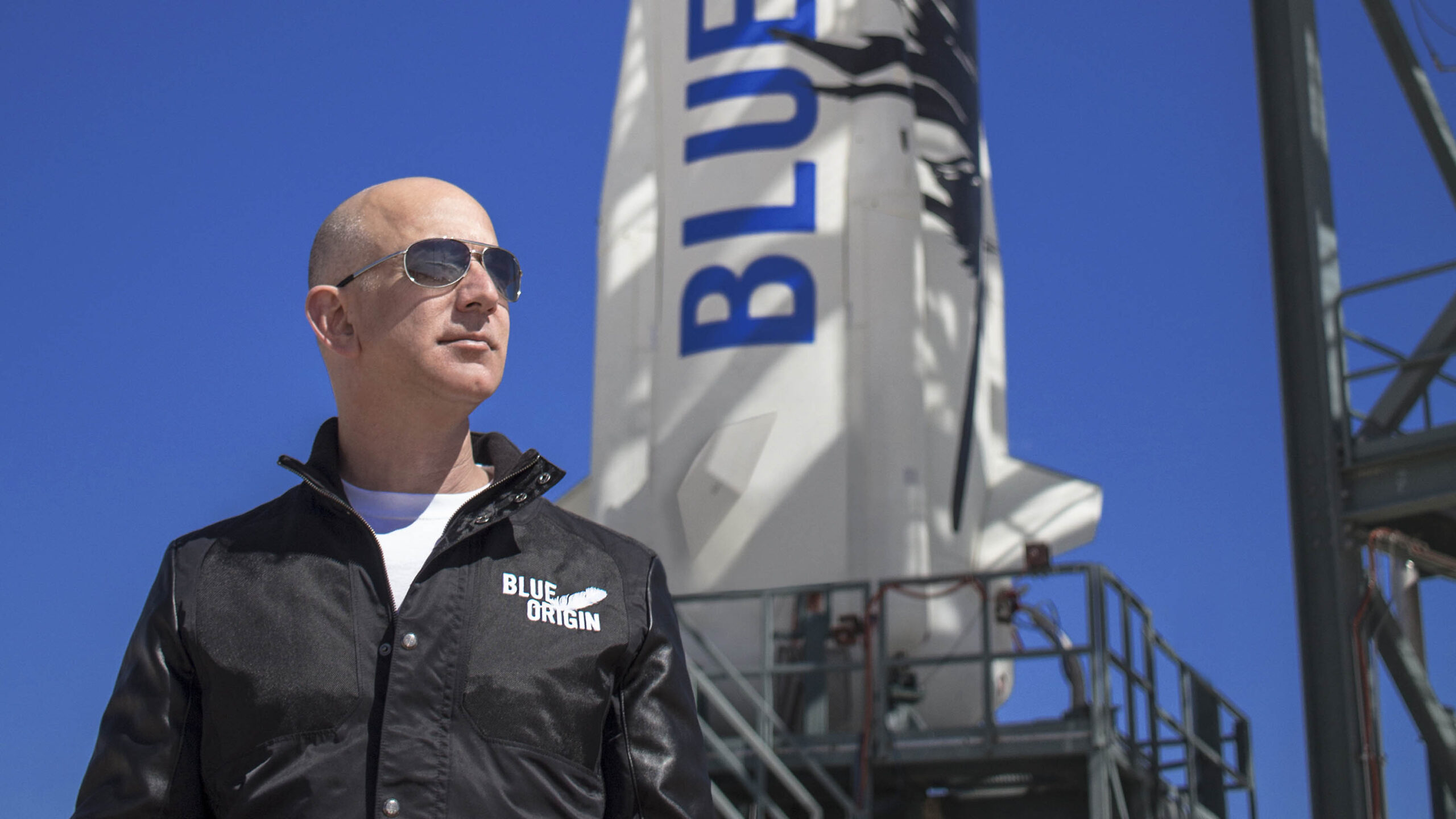In the ever-evolving landscape of space exploration, few names stand out as prominently as Jeff Bezos. The founder of Amazon has not only transformed e-commerce but has also set his sights on the stars through his aerospace company, Blue Origin. At the heart of this venture is Jeff Bezos Rocket technology, which promises to make space travel more accessible, sustainable, and innovative. From suborbital flights to ambitious orbital missions, Bezos’ rockets are pushing the boundaries of what’s possible. In this comprehensive guide, we’ll dive deep into the world of Jeff Bezos’ rocket endeavors, exploring the history, technology, achievements, and future prospects of Blue Origin. Whether you’re a space enthusiast, an investor, or simply curious about the billionaire’s space ambitions, this article covers it all.
If you’re searching for “Jeff Bezos rocket,” you’re likely interested in how this tech mogul is challenging the status quo in aerospace. Blue Origin’s flagship rockets, such as New Shepard and the upcoming New Glenn, represent Bezos’ vision of a future where humanity becomes a multi-planetary species. Let’s break it down step by step.
The Origins of Jeff Bezos’ Space Ambition

Jeff Bezos’ fascination with space isn’t a recent development. Born in 1964, Bezos has long been inspired by science fiction and the pioneers of space exploration like NASA’s Apollo missions. In 2000, while Amazon was still in its growth phase, Bezos quietly founded Blue Origin in Kent, Washington. The company’s name draws from the “blue planet” Earth, symbolizing the starting point for humanity’s journey into space.
Blue Origin’s motto, “Gradatim Ferociter” (Latin for “Step by Step, Ferociously”), encapsulates Bezos’ methodical yet aggressive approach to innovation. Unlike competitors who rushed into high-profile launches, Bezos focused on building reusable rocket technology from the ground up. This emphasis on reusability is a cornerstone of Jeff Bezos’ rocket strategy, aiming to reduce the cost of space travel dramatically—much like how Amazon disrupted retail.
Bezos’ personal investment in Blue Origin is staggering. He funds the company by selling about $1 billion worth of Amazon stock annually, underscoring his commitment. In interviews, Bezos has stated that space colonization is essential for humanity’s survival, predicting that Earth’s resources will eventually be strained. His rockets aren’t just vehicles; they’re tools for building infrastructure in space, from orbital habitats to lunar bases.
New Shepard: Jeff Bezos’ Suborbital Rocket Marvel

When people think of “Jeff Bezos rocket,” the New Shepard often comes to mind first. Named after Alan Shepard, the first American in space, this suborbital rocket is designed for short trips to the edge of space, offering passengers a taste of weightlessness and stunning views of Earth.
Technical Specifications and Design
New Shepard stands at about 60 feet tall and is powered by the BE-3 engine, a liquid hydrogen and liquid oxygen propulsion system developed in-house by Blue Origin. The rocket’s capsule can carry up to six passengers and is equipped with the largest windows in spaceflight history, providing panoramic views. What sets New Shepard apart is its reusability: the booster lands vertically after launch, much like SpaceX’s Falcon 9, but with a focus on precision and safety.
The flight profile is straightforward yet groundbreaking. New Shepard launches from Blue Origin’s West Texas facility, reaches an altitude of over 100 kilometers (the Kármán line, the boundary of space), and allows passengers about four minutes of microgravity. The capsule then parachutes back to Earth, while the booster uses its engines for a controlled descent.
Milestones and Achievements
Blue Origin’s New Shepard has achieved numerous milestones since its first flight in 2015. By 2021, it had completed multiple uncrewed test flights, demonstrating reliability. The pinnacle came on July 20, 2021, when Jeff Bezos himself flew aboard New Shepard NS-16, accompanied by his brother Mark, aviation pioneer Wally Funk, and teenager Oliver Daemen. This marked Blue Origin’s first crewed mission and Bezos’ personal “Jeff Bezos rocket” moment, fulfilling a lifelong dream.
Since then, New Shepard has flown several commercial missions, carrying celebrities, scientists, and paying customers. In 2023, it resumed flights after a brief hiatus due to an anomaly investigation, showcasing Blue Origin’s commitment to safety. These suborbital jaunts aren’t just joyrides; they’re stepping stones for scientific research, testing technologies like zero-gravity experiments and Earth observation tools.
SEO Tip: Why New Shepard Matters for Space Tourism
For those googling “Jeff Bezos rocket space tourism,” New Shepard is the gateway. Priced at around $200,000 to $500,000 per seat (estimates vary), it’s making space accessible to non-astronauts. Competitors like Virgin Galactic offer similar experiences, but Blue Origin emphasizes sustainability—New Shepard’s engines produce only water vapor as exhaust, minimizing environmental impact.
New Glenn: The Heavy-Lift Rocket Powering Bezos’ Orbital Dreams
While New Shepard handles suborbital flights, Jeff Bezos’ rocket ambitions extend far beyond. Enter New Glenn, Blue Origin’s orbital-class rocket named after John Glenn, the first American to orbit Earth. This beast is designed for heavy-lift missions, capable of delivering payloads to low Earth orbit (LEO), geostationary orbit, and even the Moon.
Design and Capabilities
New Glenn is a two-stage rocket standing over 300 feet tall—taller than the Statue of Liberty. Its first stage is powered by seven BE-4 engines, which burn liquefied natural gas (LNG) and liquid oxygen for efficiency and power. The BE-4 is a game-changer; it’s also being supplied to United Launch Alliance for their Vulcan rocket, highlighting Blue Origin’s role in the broader aerospace industry.
The rocket’s reusable first stage is engineered to land on a drone ship at sea, similar to SpaceX’s methods, allowing for rapid turnaround and cost savings. New Glenn can carry up to 45 metric tons to LEO, making it a direct competitor to SpaceX’s Falcon Heavy and NASA’s Space Launch System (SLS). Its fairing (the nose cone) is one of the largest ever built, accommodating oversized satellites and space station modules.
Development Timeline and Challenges
Development of New Glenn has been methodical, with Bezos investing billions to ensure reliability. The first launch was initially slated for 2020 but faced delays due to engine testing and supply chain issues. As of 2024, Blue Origin is targeting a debut flight soon, with contracts from NASA, Amazon’s Project Kuiper (for satellite internet), and other clients.
One notable challenge was the BE-4 engine’s development, which took longer than expected. However, successful hot-fire tests in 2023 marked a major milestone. Bezos has emphasized that these delays are part of the “step by step” philosophy, prioritizing safety over speed.
Future Missions and Impact
New Glenn is poised to support NASA’s Artemis program, which aims to return humans to the Moon. Blue Origin is part of the Human Landing System (HLS) team, developing the Blue Moon lander to work in tandem with New Glenn. Imagine “Jeff Bezos rocket to the Moon”—it’s not science fiction; it’s on the horizon.
For commercial applications, New Glenn will deploy constellations of satellites for global internet coverage, rivaling SpaceX’s Starlink. This could democratize access to high-speed internet in remote areas, aligning with Bezos’ Amazon roots.
Jeff Bezos’ Vision: Beyond Rockets to a Multi-Planetary Future
Jeff Bezos’ rocket projects are more than hardware; they’re part of a grand vision. In his 2019 Blue Origin presentation, Bezos outlined plans for O’Neill cylinders—massive rotating space habitats that could house millions. He envisions using rockets like New Glenn to mine asteroids for resources, build solar power stations, and establish lunar colonies.
This contrasts with Elon Musk’s Mars focus. Bezos argues for starting closer to home, leveraging the Moon’s resources for sustainable space infrastructure. His advocacy for reusable rockets addresses the “great inversion”—shifting heavy industry off Earth to preserve our planet.
Critics point to Blue Origin’s slower pace compared to SpaceX, but Bezos counters that true innovation requires patience. Recent wins, like securing a $3.4 billion NASA contract for Blue Moon in 2023, validate his approach.
Comparisons: Jeff Bezos’ Rocket vs. Competitors
No discussion of “Jeff Bezos rocket” is complete without comparisons. SpaceX’s Falcon 9 has over 200 successful launches, while Blue Origin is still ramping up. However, Blue Origin’s focus on clean propulsion and vertical integration gives it an edge in sustainability.
Virgin Galactic’s SpaceShipTwo offers suborbital flights but lacks reusability. NASA’s SLS is government-funded and non-reusable, making Bezos’ private-sector innovations stand out.
Recent Developments and Future Outlook
As of 2024, Blue Origin is expanding its facilities, including a new engine factory in Alabama. Jeff Bezos stepped down as Amazon CEO in 2021 to focus more on Blue Origin, signaling accelerated progress. Upcoming milestones include New Glenn’s maiden flight and crewed lunar missions by the late 2020s.
Challenges remain, such as regulatory hurdles and competition for talent. Yet, with Bezos’ resources, Blue Origin is well-positioned.
Conclusion: The Legacy of Jeff Bezos’ Rocket Endeavors
Jeff Bezos’ rocket journey through Blue Origin is a testament to bold innovation. From New Shepard’s tourist flights to New Glenn’s orbital might, these rockets are paving the way for humanity’s spacefaring future. As Bezos often says, “It’s time to go back to the Moon—this time to stay.”
If you’re inspired by “Jeff Bezos rocket,” keep an eye on Blue Origin’s updates. Space travel is no longer the domain of governments; it’s being democratized by visionaries like Bezos. With ongoing advancements, the stars are closer than ever.

